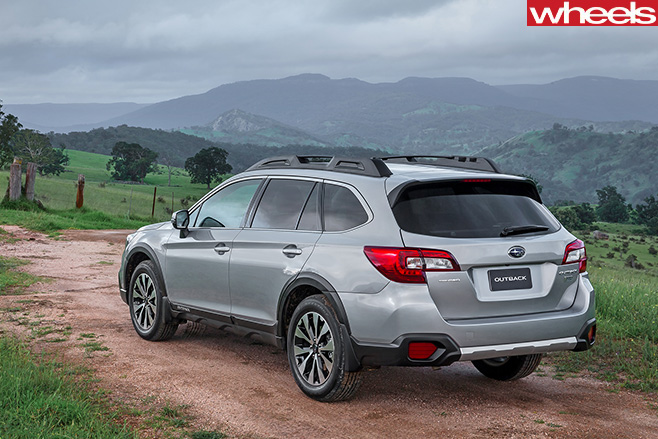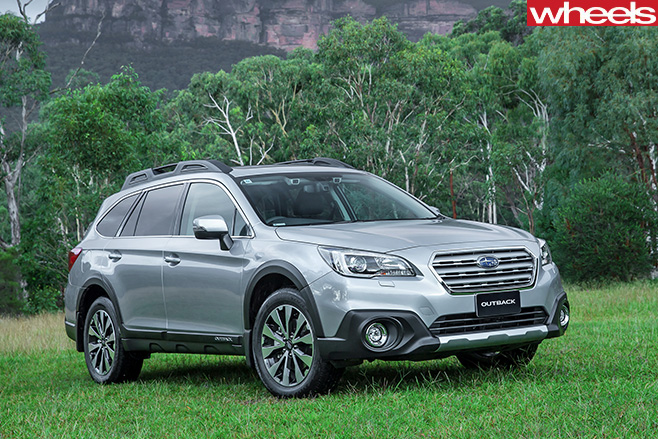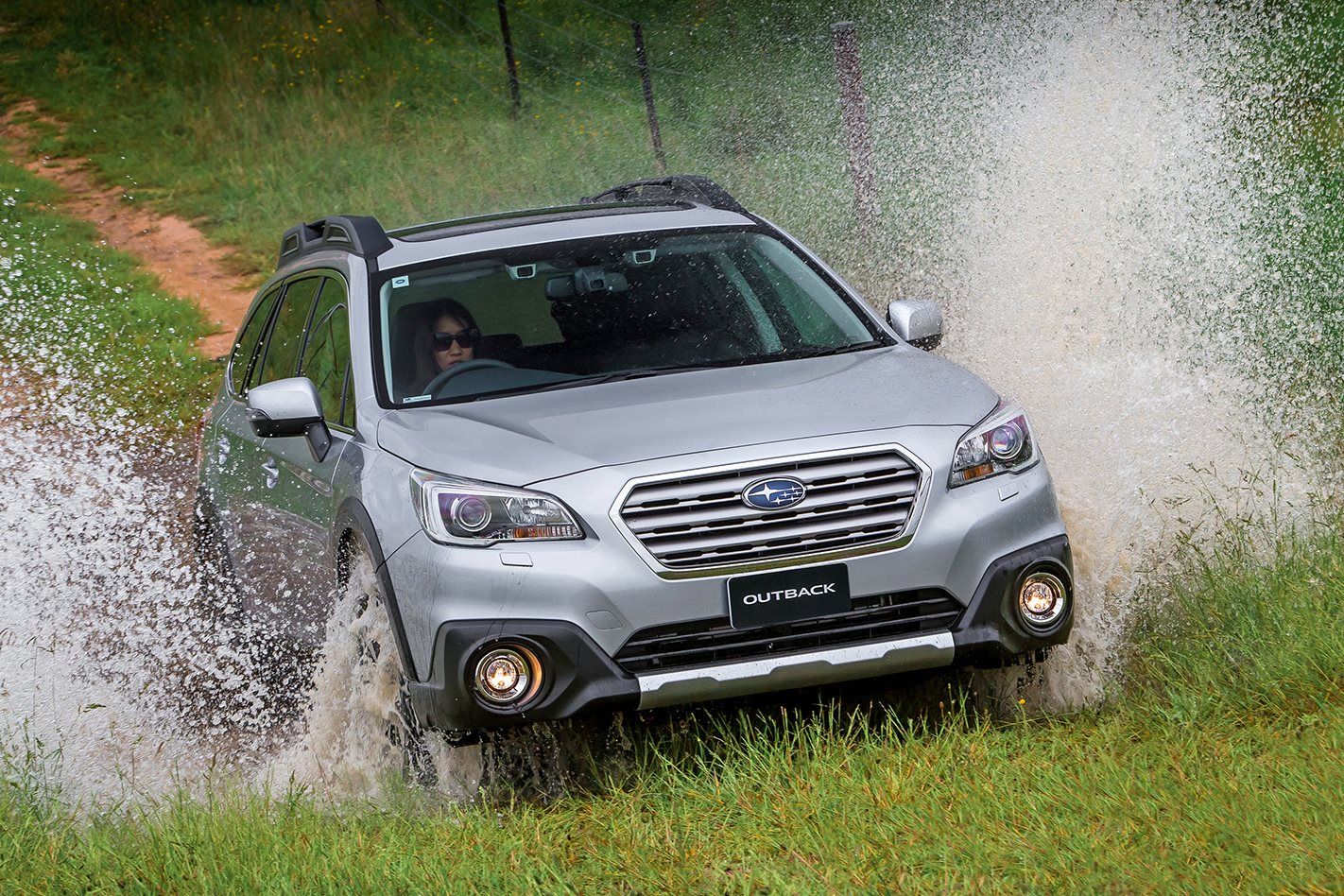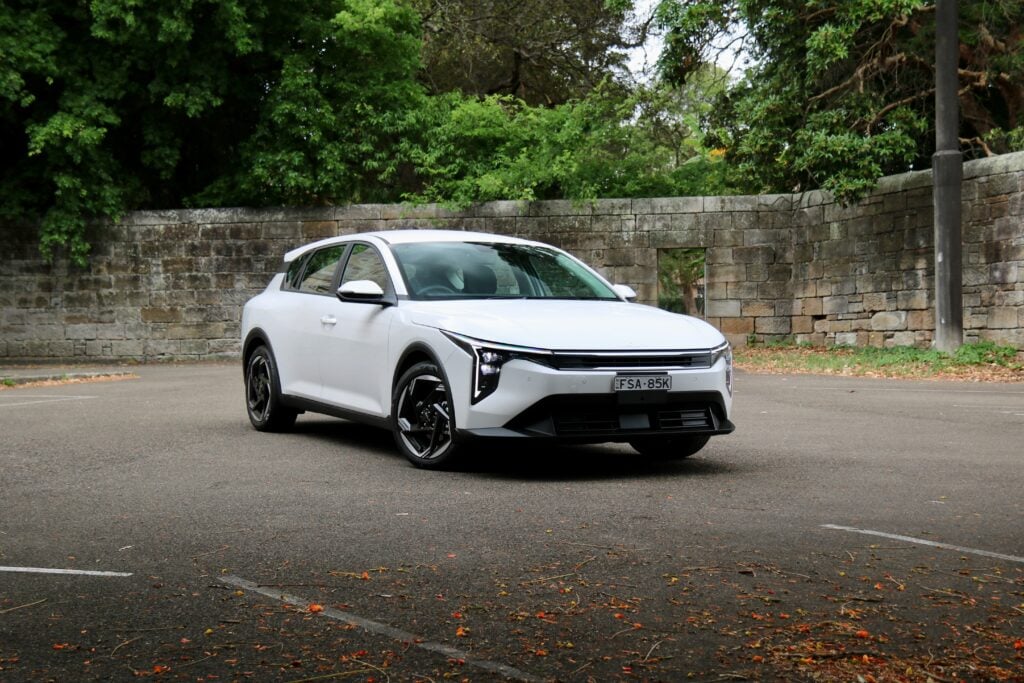The Subaru Outback has added more gloss to what’s already a shiny package in buyers’ eyes.
WHAT IS IT? The Outback almost owns the soft-roader wagon category, and has flourished despite an influx of SUVS – even from its Subaru Forester stablemate – as one of the brand’s best sellers in Australia.
WHY WE’RE DRIVING IT This is a model year 2016 update (MY16) that introduces some mechanical tweaks and spec changes.
MAIN RIVALS Skoda Octavia Scout, Volkswagen Passat AllTrack
THE WHEELS VERDICT The Subaru Outback has minimal changes for 2016, but the additional safety equipment and suspension changes have direct benefits to buyers. It’s a spacious, practical and relatively economical car in its class, and one of the best value for money SUV alternatives.
PLUS: Additional safety equipment; improved ride quality; practicality MINUS: Lacks overall polish; dynamically bland; drab interior

In terms of equipment, the changes for 2016 are quick and brutal: on the outside, LED daytime running lights are now standard. More significant is that Subaru’s camera-based safety-system ‘EyeSight’ is now available on diesel Outbacks for the first time. That means that it’s now standard on every model – both petrol and diesel – that’s equipped with CVT. In other words, 97.5 percent of all Outbacks sold.
On the Premium and 3.6R versions, EyeSight comes with the ‘Vision Assist Package’. This adds five key elements to the system in addition to the adaptive cruise control and pre-collision auto braking/steering. These include blind spot detection, lane change assistance, as well as rear cross traffic alert. On all Outbacks, there’s a new emergency stop signal that turns on the hazard lights when it thinks you’re braking in an emergency.
Mechanically, you’ll need to have an extremely receptive rear-end to distinguish the changes made to this year’s model. That’s because they’re confined to suspension tweaks, which see a more compliant tune at the rear, to give the Outback a genuinely different feel to the Subaru Liberty that is essentially the sedan version of the wagon. There’s also a new mapping for the CVT, which affects the throttle.

Around town, it’s a relatively serene drive, and while it sells in spades the Outback is hardly a benchmark in terms of dynamics and seductive road manners. The steering is numb, and it’s hardly involving. It’s more than adequate, though, at dismissing a bumpy road – thanks to that increase in suspension compliance, blended with excellent damping – while offering relative manners around town. It’s not as convincing as, say, the Forester, but it is more agile and has the benefits of being lower down and feeling less like it’s on stilts.
That 2.0-litre turbo-diesel has a tinny note to it under load, and a lethargic rolling response. Still, when cruising it’s smooth and relatively quiet, and that CVT makes its faux- gearchanges at 3900rpm without any fuss. That throttle sharpens up in Manual mode, where the engine will hold out until 4400rpm, with a pedal that’s easy to modulate. The brake pedal is the odd one out on the overall weight and feel of the driving controls, with a hard, bitey feel even if the Outback pulls up strongly.

All of this adds up to an Outback that’s safer, smarter and marginally better, but still not a car that stands out for its dynamic or practical nous. The world has moved from raised wagons turned into SUVs, and sadly so too has Subaru’s focus: the Outback lacks the overall polish of the Forester, for instance, and can’t match more expensive, prestige rivals such as the Volkswagen Passat Alltrack if you’re shopping for a wagon that doesn’t mind a steep driveway or occasional localised flash flood.
That leaves price as the Outback’s saving grace. And the fact that the current generation was given a massive price cut of up to $10,000 when it arrived in late 2014 makes this a serious contender. It’s also enough to slightly soften the $1500 increase for our Premium test car, now $44,990, even if the range still starts at an unchanged $35,990.
SPECS Model: Subaru Outback 2.0D Premium Engine: 1998cc 4cyl, dohc, 16v turbo-diesel Max power: 110 kW@3600 rpm Max torque: 350 Nm@1600-2800rpm Transmission: CVT Weight: 1602kg 0-100km/h: 9.9sec (claimed) Fuel economy: 6.3L/100km Price: $44,490 On sale: Now
Click here to read the full range review of the Subaru Outback.





